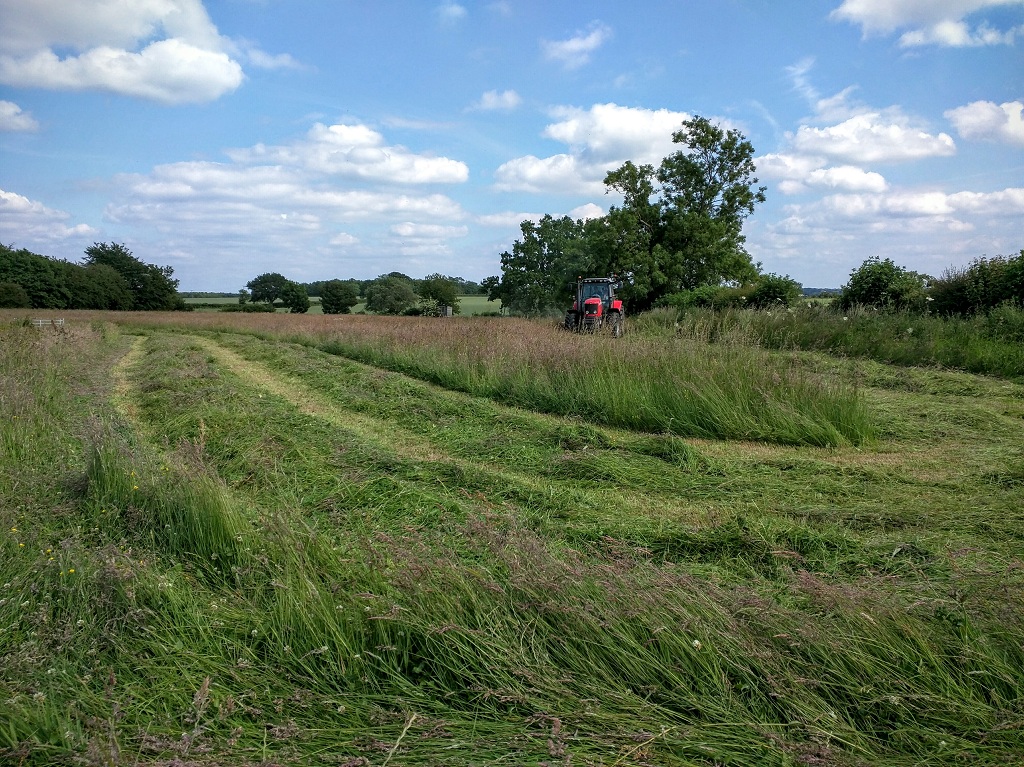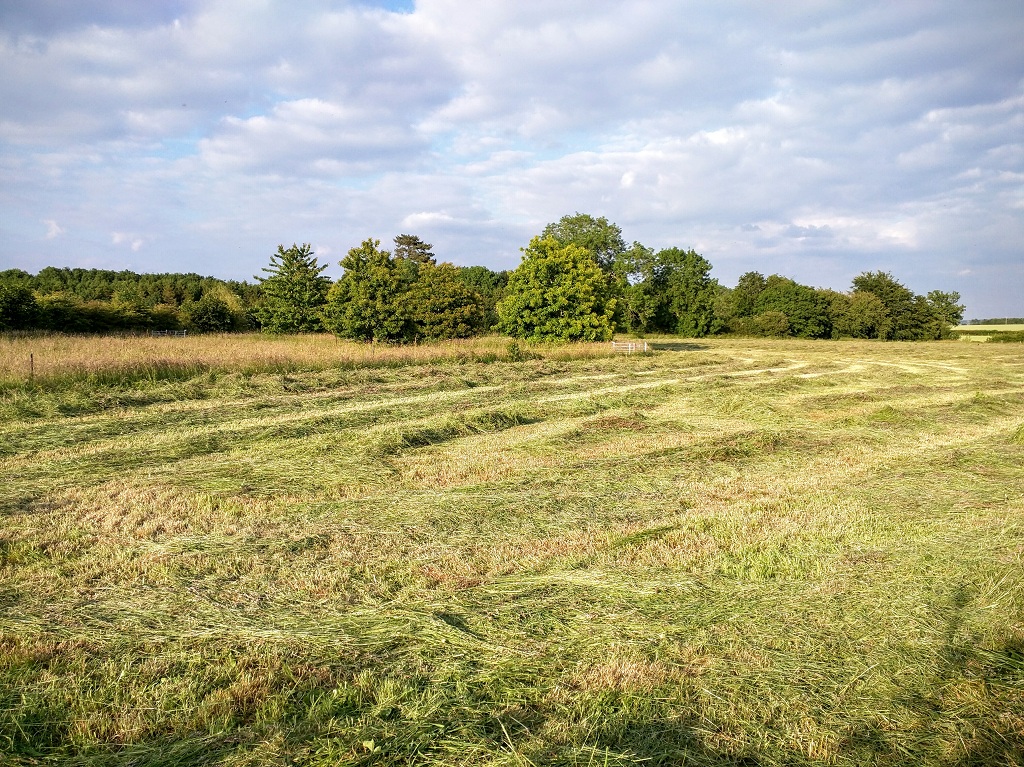Meadow mowing
Something happens when you buy a house with a field. You acquire grass, lots of grass. Then, because you read a little about grassland management before buying the field you know that something needs to be done with it so that the grass doesn't degenerate from good pasture to thick and tussocky grazing.
Our long-term plan is to use more and more of the field for grazing our own livestock; however, whilst we only have a few pigs, ducks and turkeys in the field there's still more than three acres of ungrazed grass left, which reaches past waist height at this time of year.
Thankfully, on Tuesday afternoon Mark (our neighbouring farmer) arrived in a tractor to mow the field, which is a watershed moment in the year for us. In less than a couple of hours our field goes from tall savannah to neat rows of mown grass drying in the sunshine. The transformation is huge, as you can see from the photos below.


We don't keep any ruminants, let alone overwinter them, so we don't have any need for hay to feed animals. Even so, the grass needs mowing to keep it in good condition for when we do want to graze sheep or cows in the field, so we've come to a simple win-win arrangement with Mark. He cuts the field and then gets to collect the mown grass for baling into silage to feed his large herd of sheep over the winter.
After several weeks of long grass it's nice to see the field given a neat haircut. It also means we can see a lot more of the wildlife that live in and around it. On Tuesday evening we sat out in the field and watched a young fox hunt for mice in the freshly mown grass
as the sun went down. It was completely oblivious to us sitting there as it listened intently for the sound of scurrying feet and then sprang into the air before landing on a pile of grass to trap its prey.
The mown grass will stay in the field for a couple of days to dry out before Mark arrives with a bailer to produce the large cylinders of silage wrapped in black plastic that he'll move down the hill for storage until it's needed in the depths of winter. There'll be another cut later in the year but for now we can enjoy being able to easily walk around the field again without wading through the grass, lots of grass.